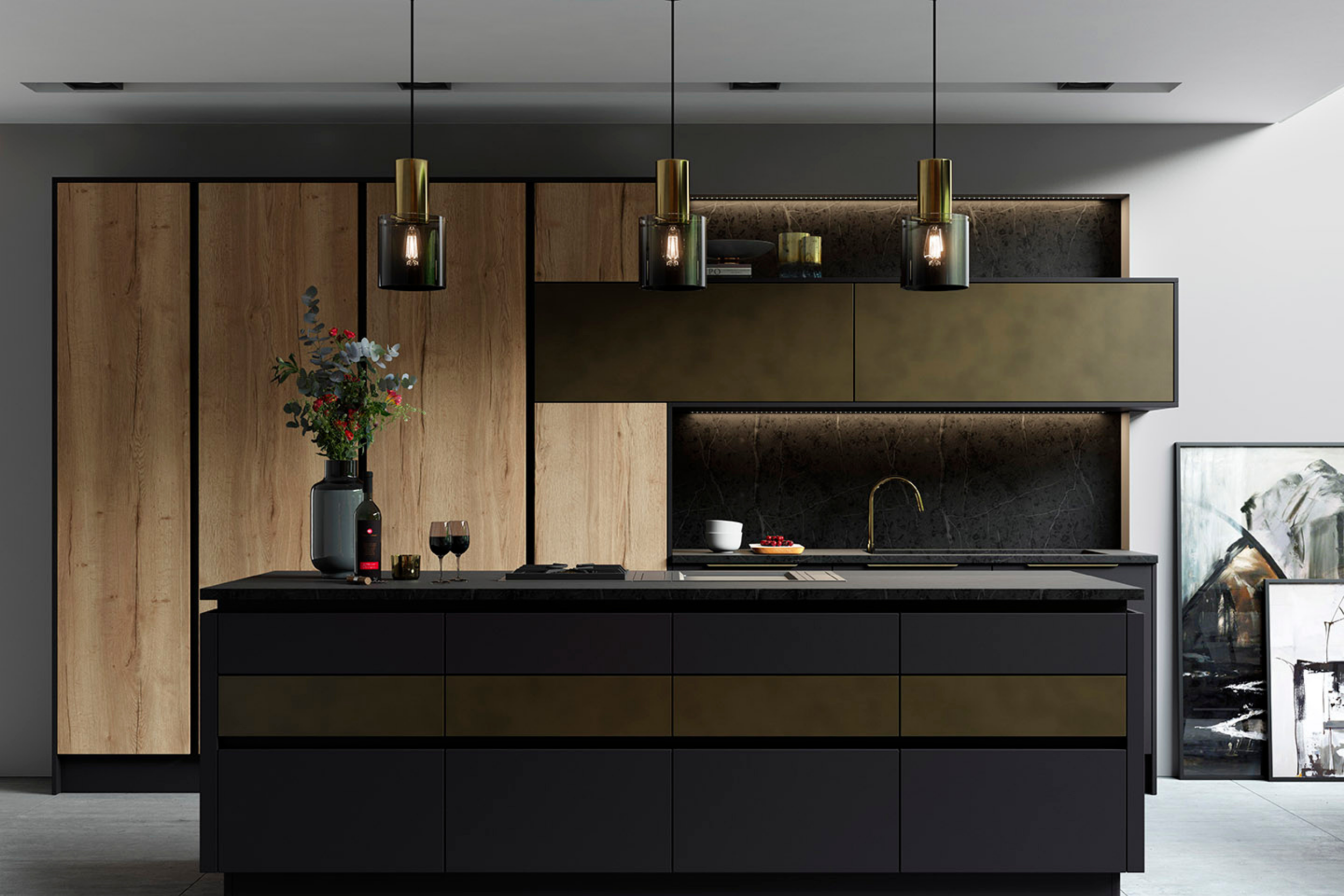Handleless kitchens: everything you need to know
What is a handleless kitchen, you ask? In short, it’s a kitchen without handles. More specifically, the cabinets and drawers don’t have an outward handle attached to them, and they rely on a concealed element – either a mechanism, rail or camouflaged handle – to open and close.
Handleless kitchens remain a firm favourite for those in the market for a modern kitchen that is easy to maintain with a minimalistic look and feel. Even though it seems that there are a lot of options when it comes to handleless kitchens due to the many different looks that can be achieved by them, there are actually just three types under the ‘handleless kitchen’ umbrella.
Each one comes with its own pros and cons, making your decision of which type to go for a relatively easy choice once you break it down. Join us as we run through each below.
True Handleless
With true handleless, the rail is routed into the cabinet and fixed onto the carcase, creating a concealed handle and ultra-minimal modern kitchen. The clean lines and functionality of the style mean that almost any result can be achieved in your kitchen.
Pros:
Ease of use due to the hand space available, especially for those who have bigger hands or longer nails.
Due to the choice available, lots of kitchen aesthetics can be realised in the true handleless design.
Rails are available in metals – such as stainless steel, copper, brass, graphite and white metal – and even timber, which can be painted to match your kitchen or left to boldly contrast.
A sleek finish and stylish outcome for your handleless kitchen.
Cons:
To achieve more space for hands, there are space and design restrictions when it comes to the size of your kitchen.
A little more cleaning is required thanks to the gaps created by the channel railing.
For tall cabinetry, the rail is vertical, using an additional 35mm of space over other handleless options available.
It not possible to have double cabinets (a pantry with internal drawers, for example) as the rail needs to fix to the cabinet carcase.
The style does not allow multiple appliances to be fitted next to each other.
J-Trim
A popular handleless option at a lower price point. Here, the handle is integrated into the door, making the door open from either the top or the bottom, depending on where the J grip is built-in and accessed. It’s a standard design that is suitable for many kitchens and spaces.
Pros:
This is the most cost-effective handleless option on the market.
It’s a timeless classic with many finishes and designs available for convenience.
Layout options are limitless and the look doesn’t go out of fashion.
Suitable for any sized kitchen as the handles are integrated into the doors, taking up less space overall.
Cons:
The depth of handle pull isn’t very large, so we advise avoiding this style if you have large hands or long nails.
Since the design here can be average and underwhelming, other areas of the kitchen should be looked at to create a feature focal point, such as the worktop or splashback.
More cleaning required where the grooves collect dust and residue.
Tip-On
As the most contemporary handleless option, this sleek kitchen is accessed by lightly pushing the door or drawer. Activated by the pressure, the door or drawer opens automatically thanks to the mechanism which is fitted internally and hidden from sight. There are also electric options available at a higher price point.
Pros:
There are no design restrictions as the mechanism is fitted internally, so it’s possible to maximise storage space.
A simple way to access your kitchen, keeping it clean thanks to the no-touch functionality.
The finished product is a very sleek, minimalist modern kitchen with unbroken lines.
Much less cleaning needed than other options, as no handle recesses mean no gathered dust or residue.
Cons:
It’s the most expensive option on the market so suitable for those with higher budgets or a real preference for this style.
This style works best with freestanding dishwashers and fridge freezers – for integrated appliances you need to go electric (incurring extra expense), otherwise handles are needed.
Practice makes perfect as some find it fiddly to use and easy to accidentally open before getting used to the mechanics of the design.
The catches require replacing around every five years depending on kitchen usage to ensure the opening remains smooth and efficient.
The key takeaway here is that there are no limits when it comes to handleless kitchens: there are even instances where options can be combined to create your ideal kitchen, both visually and through functionality. All handleless options are designed to create beautiful, striking and modern kitchens, but the wow-factor is almost always down to great design. When choosing your handleless kitchen, remember to speak to design experts who can bring your vision to life.
If you have questions about which handleless option is for you or how they can be combined to create your dream kitchen, ask the experts at PAD. We are actual humans that love what we do, so feel free to drop us a line today



